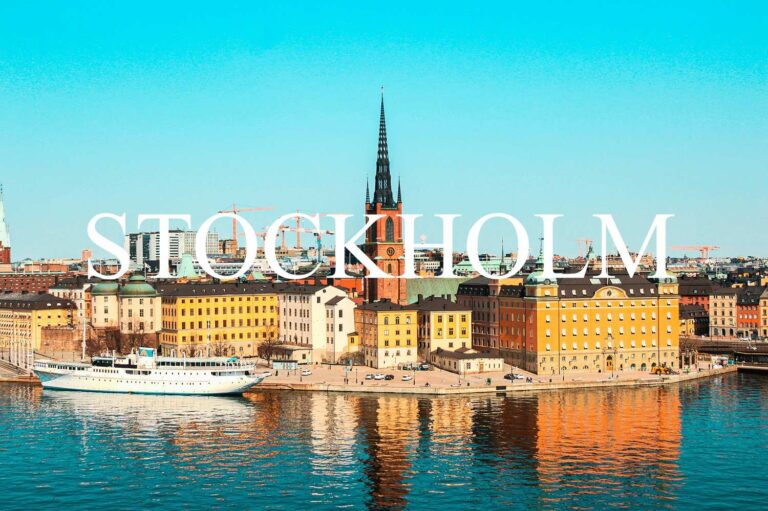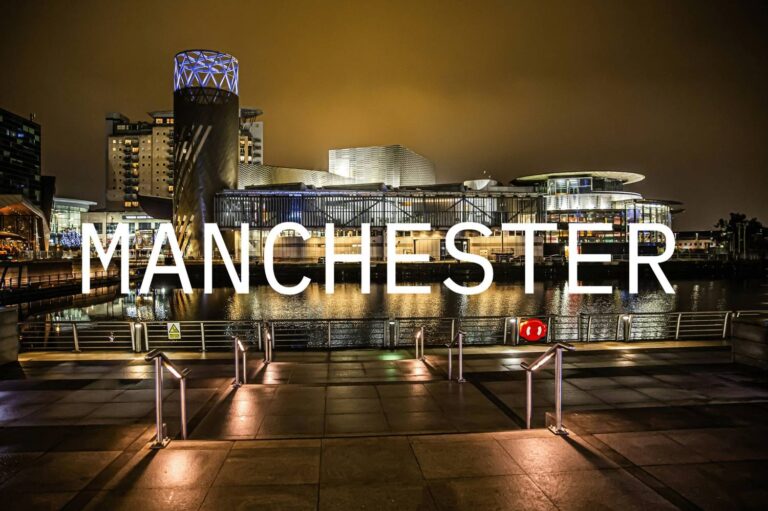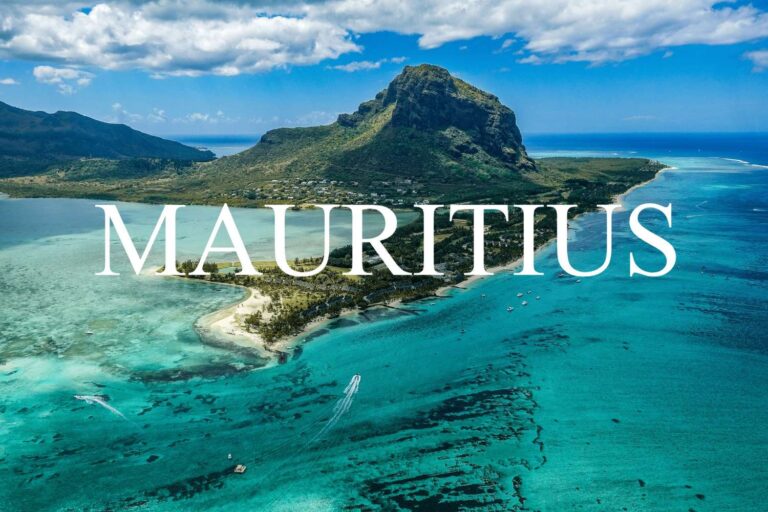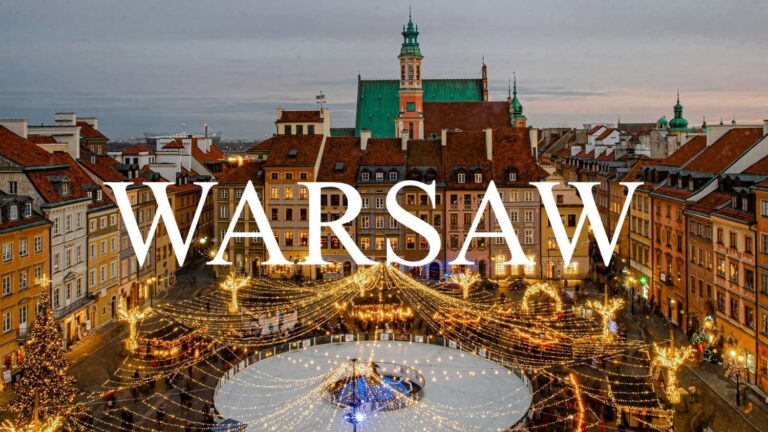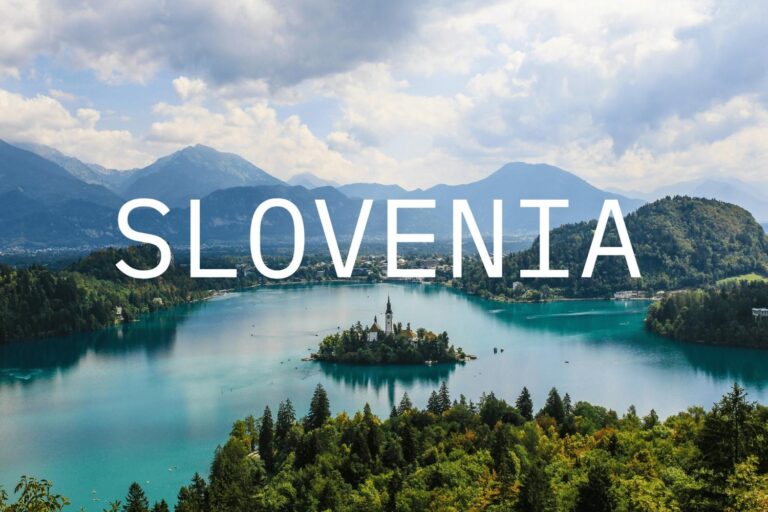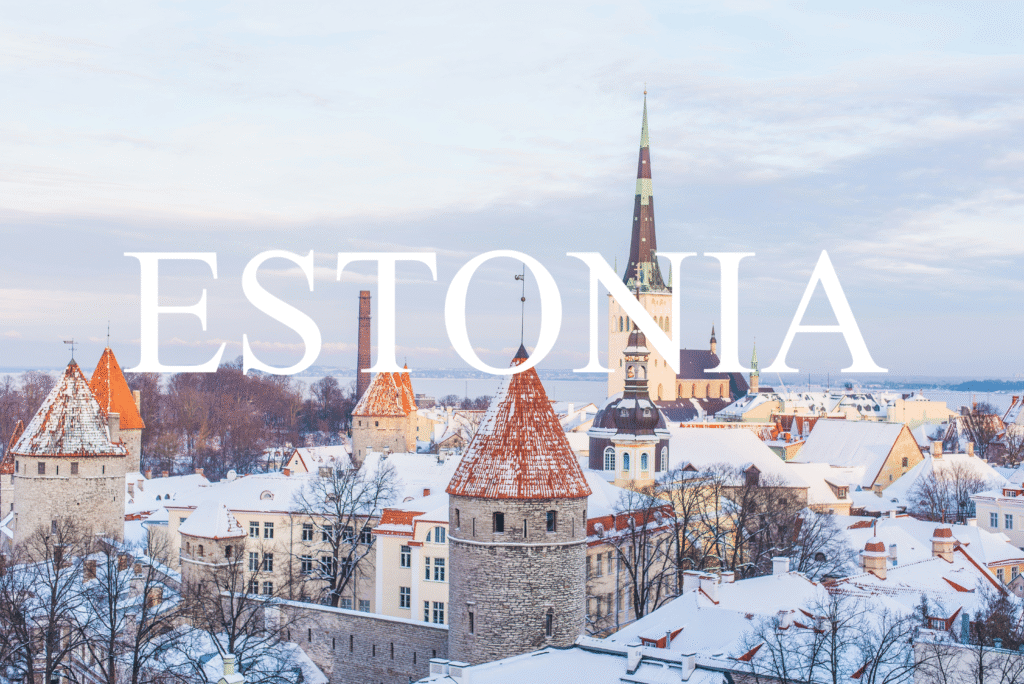
Tucked away in Northern Europe, Estonia is a captivating destination that seamlessly blends medieval heritage with forward-thinking innovation. Often overlooked by mainstream tourism, this Baltic gem offers travelers an enchanting experience—from the storybook streets of Tallinn’s UNESCO-listed Old Town to the quiet beauty of its bogs, forests, and untouched islands.
Estonia is a place where contrasts coexist beautifully. Walk along cobblestone lanes flanked by Gothic spires, then hop on high-speed Wi-Fi in one of Europe’s most digitally advanced nations. Explore ancient castles, vibrant local markets, and centuries-old churches by day, and enjoy buzzing cafés, innovative restaurants, and a thriving tech scene by night.
Nature lovers will find solace in Estonia’s vast national parks, scenic coastal areas, and dark-sky reserves perfect for stargazing. Whether you’re kayaking through Soomaa’s floodplains, birdwatching on the island of Saaremaa, or relaxing in a lakeside sauna, Estonia offers peace, authenticity, and adventure in equal measure.
Ideal for history buffs, nature seekers, and modern explorers alike, Estonia is not just a destination—it’s a refreshing journey off the beaten path that’s bound to surprise you at every turn.
🗓️ Best Time to Visit Estonia
🌼 May to September (Late Spring to Early Autumn)
This is the best time to visit Estonia when the weather is mild and pleasant, perfect for outdoor adventures, festivals, and exploring the coastlines. Summers bring long daylight hours and vibrant cultural events.
❄️ December to February (Winter)
If you love winter landscapes, snowy forests, and cozy Christmas markets, visiting Estonia in winter offers a magical atmosphere, especially in Tallinn and the countryside. Just be prepared for cold temperatures and shorter days.
💵 Currency & Travel Essentials
- Currency: Euro (€)
- Language: Estonian (English widely spoken, especially in Tallinn and tourist areas)
- Transportation: Efficient buses, trams (in Tallinn), rental cars, and ferries for island hopping
- Average Daily Budget:
- Budget: €40–70
- Mid-range: €80–150
- Luxury: €200+
🏰 10 Best Places to Visit in Estonia
Tallinn Old Town
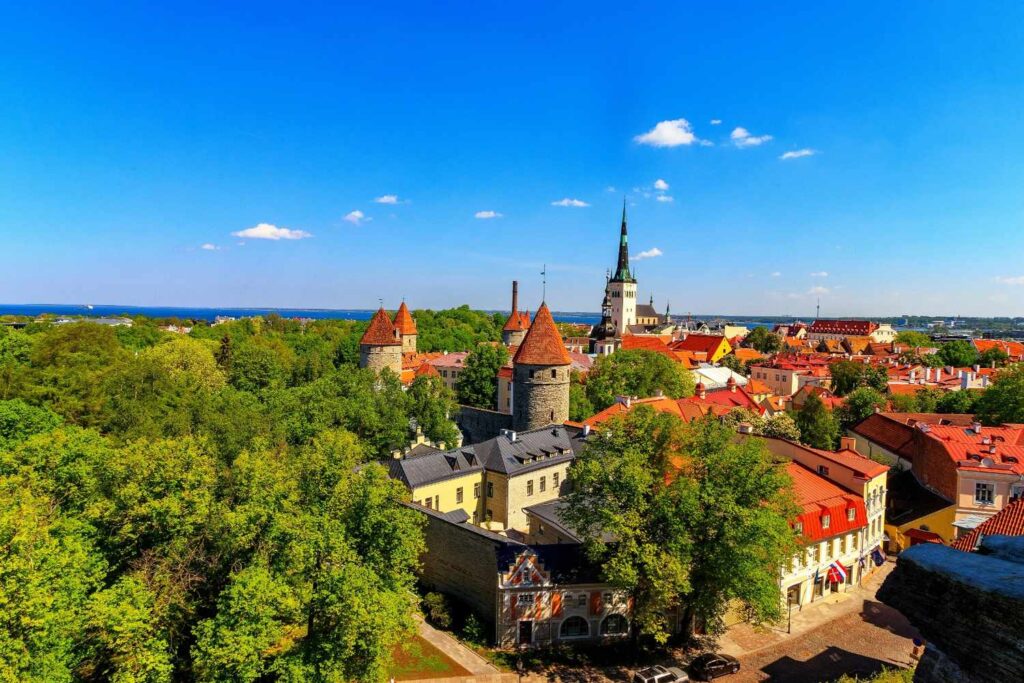
Photo by Rasmus Andersen on Unsplash
Stepping into Tallinn Old Town is like traveling back in time to a perfectly preserved medieval world. This UNESCO World Heritage site enchants visitors with its cobblestone streets, towering city walls, and charming, colorful buildings that tell stories dating back over 800 years. Whether you’re wandering through bustling squares, discovering hidden courtyards, or soaking in panoramic views from ancient towers, Tallinn Old Town offers a captivating blend of history, culture, and vibrant modern life.
🌟 Highlights of Tallinn Old Town
🏘️ Cobblestone Streets & Medieval Architecture
Meander through narrow alleys lined with Gothic spires, historic merchant houses, and quaint cafés. The medieval architecture remains remarkably intact, giving the area a fairy-tale charm unlike anywhere else in Northern Europe.
🕍 Town Hall Square (Raekoja Plats)
At the heart of Old Town lies the lively Town Hall Square, where locals and tourists gather for seasonal markets, festivals, and open-air concerts. The striking Gothic Town Hall, dating back to the 14th century, dominates the square and offers a glimpse into Tallinn’s civic history.
🌅 Toompea Hill & Alexander Nevsky Cathedral
Climb up to Toompea Hill for breathtaking views over the red rooftops and the Baltic Sea beyond. Here you’ll find the majestic Alexander Nevsky Cathedral, an iconic symbol of Tallinn with its intricate onion domes and richly decorated interiors.
🏰 City Walls & Towers
Explore the medieval fortifications, including towers like Kiek in de Kök and Fat Margaret, which once protected the city. Many are open to visitors and offer exhibitions about Tallinn’s fascinating defensive past.
🎨 Artisanal Shops & Local Cuisine
Old Town is brimming with boutiques selling handcrafted goods, traditional Estonian souvenirs, and cozy restaurants serving hearty local dishes. Don’t miss trying marzipan, black bread, and fresh Baltic seafood.
🎭 Museums & Cultural Attractions
Dive deeper into Estonia’s heritage with museums like the Estonian History Museum and the Kiek in de Kök Museum, all located within the walls of Old Town.
📍 How to Get There
- Tallinn Old Town is centrally located and easily walkable from the city’s main train and bus stations.
- Public transport and taxis provide easy access from other parts of the city and airport.
🕒 Visitor Information
- Best Time to Visit: Spring through early autumn for pleasant weather and lively street events; the festive Christmas market in winter is also magical.
- Recommended Visit Duration: Spend at least half a day exploring, but a full day allows for a leisurely experience and museum visits.
- Admission Fees: Many outdoor sites are free to explore; some museums and towers have entrance fees ranging from €5–€15.
💡 Travel Tips
- 👟 Wear comfortable shoes for walking on uneven cobblestones.
- 📸 Bring a camera to capture the picturesque streets, especially during golden hour.
- 🎒 Keep a light jacket handy, as the weather can be cool, even in summer.
- 🗺️ Consider a guided walking tour to uncover hidden stories and secret spots.
- 🍴 Try local cafés for traditional Estonian pastries and strong coffee breaks.
Tallinn Old Town is a living museum, perfectly blending medieval charm with modern vibrancy. Its enchanting streets invite exploration, discovery, and moments of pure delight at every turn. Whether you’re soaking in panoramic views from Toompea Hill, enjoying a festival in Town Hall Square, or simply savoring a local treat at a cozy café, Tallinn Old Town captures the heart of Estonia’s rich heritage and warm hospitality.
Lahemaa National Park
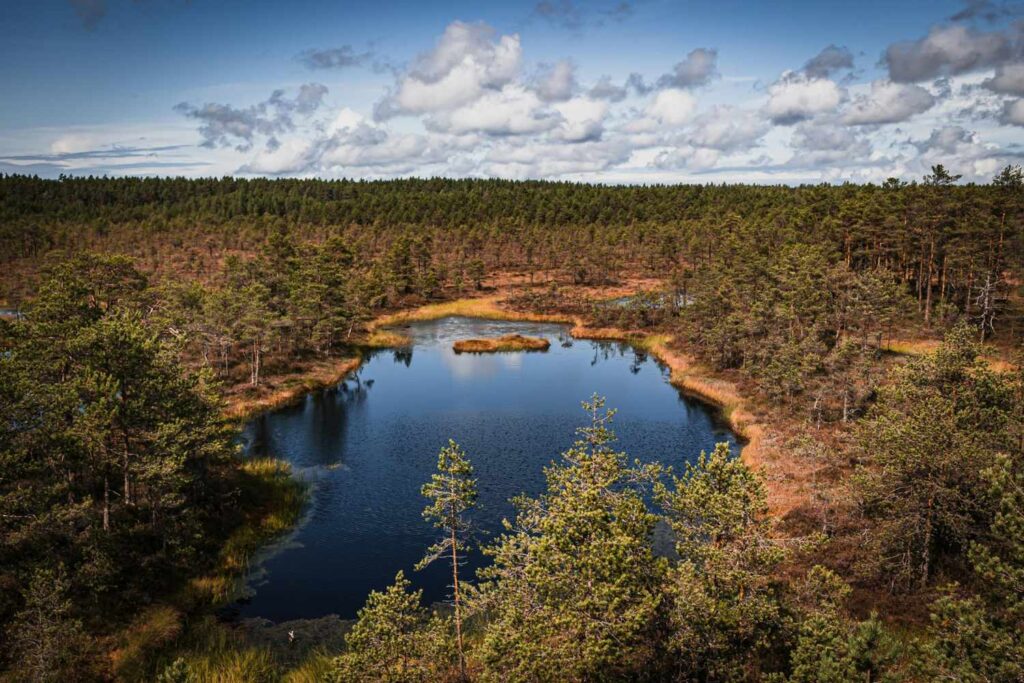
Photo by Hibiki Hosoi on Unsplash
Located just a short drive from Tallinn, Lahemaa National Park is Estonia’s first and largest national park, celebrated for its breathtaking landscapes, rich biodiversity, and fascinating cultural heritage. Spanning over 700 square kilometers, Lahemaa offers an incredible mix of dense forests, pristine bogs, rugged coastlines, and charming traditional villages.
Whether you’re an outdoor enthusiast, nature lover, or history buff, Lahemaa National Park is the perfect destination to explore Estonia’s wild beauty and cultural roots.
🌟 Highlights of Lahemaa National Park
🌲 Diverse Natural Landscapes
Lahemaa’s vast forests and wetlands are home to rare wildlife species and stunning plant life. Wander along peaceful hiking trails, discover tranquil bogs on wooden walkways, and breathe in the fresh forest air.
🏞️ Scenic Coastlines and Beaches
The park’s northern coastline stretches along the Gulf of Finland, offering beautiful sandy beaches, rocky shores, and picturesque fishing villages. Explore spots like Pärispea Peninsula and Käsmu, where sea and forest meet in perfect harmony.
🏡 Historic Manor Houses
Lahemaa is dotted with beautifully preserved manor estates like Palmse, Sagadi, and Vihula. These grand estates provide a glimpse into Estonia’s aristocratic past, featuring elegant architecture, manicured gardens, and engaging museums.
🦌 Wildlife Watching
Keep an eye out for native animals such as elk, wild boar, lynx, and various bird species. Lahemaa’s diverse habitats make it a haven for wildlife photography and birdwatching.
🚗 Getting There & Around
- Lahemaa National Park is about an hour’s drive from Tallinn, making it ideal for day trips or weekend escapes.
- Public buses connect Tallinn to several villages within the park, though having a car provides more flexibility to explore.
- Cycling and hiking are popular ways to experience the park’s trails and scenic routes.
🕒 Best Time to Visit
- Spring and summer bring lush greenery and blooming wildflowers, perfect for hiking and outdoor activities.
- Autumn paints the forests with vibrant colors, offering stunning photo opportunities.
- Winter turns Lahemaa into a snowy wonderland, ideal for cross-country skiing and peaceful walks.
💡 Travel Tips
- Wear sturdy shoes and dress in layers to comfortably explore varied terrains and weather.
- Bring a camera and binoculars to capture wildlife and sweeping landscapes.
- Plan visits to the manor houses and local museums to enrich your experience with cultural insights.
- Respect nature by staying on marked trails and following park guidelines.
Lahemaa National Park is a breathtaking escape into Estonia’s wild heart, where nature and history intertwine seamlessly. Whether you’re hiking through ancient forests, exploring coastal villages, or stepping back in time at historic manors, Lahemaa offers a rejuvenating and inspiring adventure for every traveler.
Pärnu
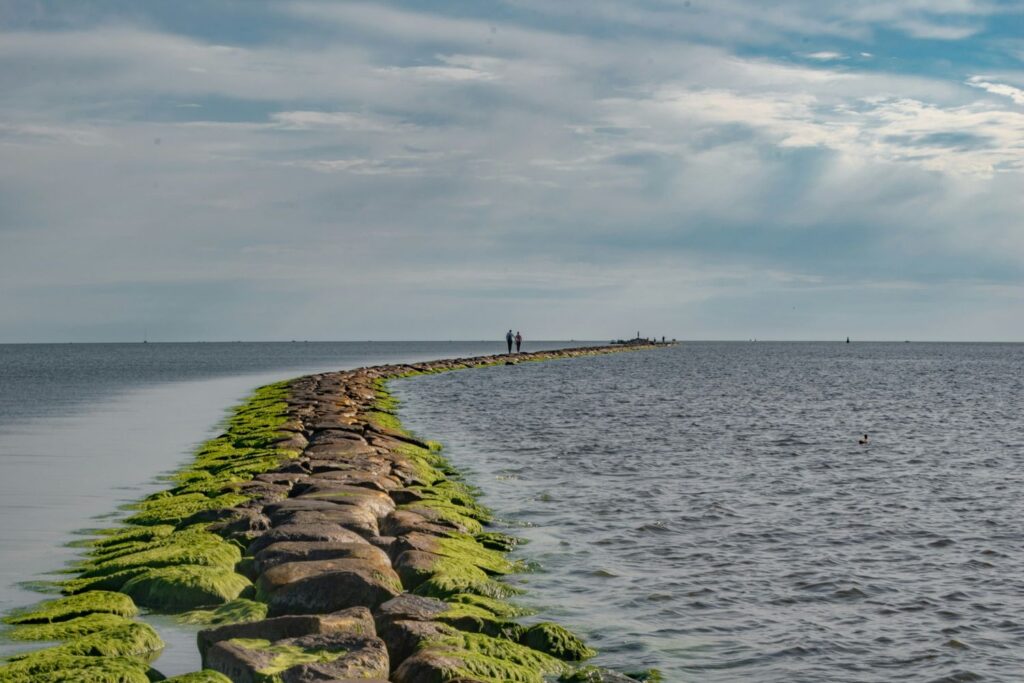
Photo by Carlos Torres on Unsplash
Known as Estonia’s beloved summer getaway, Pärnu is a vibrant coastal town that perfectly blends sandy beaches, spa culture, and lively arts scenes. Whether you’re craving relaxing seaside days, wellness retreats, or a taste of local history and culture, Pärnu offers an inviting atmosphere with a warm, friendly vibe. Its charming streets, beautiful parks, and buzzing summer festivals make it a must-visit destination for travelers seeking both tranquility and fun.
🌟 Highlights of Pärnu
🏖️ Beautiful Beaches
Pärnu’s expansive sandy beach is the heart of the town during summer. With shallow waters ideal for families and plenty of space for sunbathing, swimming, and beach volleyball, it’s a perfect spot to unwind by the Baltic Sea.
💆♀️ Renowned Spa & Wellness
Famous for its spa tradition, Pärnu hosts numerous wellness centers offering rejuvenating treatments, thermal baths, and relaxing massages. This makes the town a top choice for those seeking health and relaxation.
🌳 Pärnu Beach Park
Adjacent to the beach, the Beach Park is a peaceful green space filled with walking paths, sculptures, and playgrounds. It’s perfect for a leisurely stroll or a picnic surrounded by nature.
🎭 Vibrant Cultural Scene
Pärnu hosts many festivals and cultural events, especially in the summer months. From music concerts and theatre performances to art exhibitions, the town pulses with creative energy.
🏛️ Historic Old Town
The quaint old town area features charming wooden houses, cozy cafés, and boutique shops. Take time to explore Pärnu’s rich history and enjoy its relaxed, welcoming ambiance.
🍴 Delicious Local Cuisine
Pärnu offers a range of dining options, from seaside restaurants serving fresh seafood to cozy bistros with Estonian specialties. Don’t miss trying local favorites like smoked fish and black bread.
📍 How to Get There
- Pärnu is easily reachable by car or bus from Tallinn (about 2 hours).
- The town also has a small airport with seasonal flights.
- Once in Pärnu, most attractions are within walking or biking distance.
🕒 Visitor Information
- Best Time to Visit: Summer months (June to August) for beach weather and festivals; late spring and early autumn offer pleasant, quieter experiences.
- Recommended Visit Duration: Spend at least 1 to 2 days to soak in the beach vibes, spa treatments, and cultural highlights.
- Admission Fees: Beaches are free; spas and museums may charge entry or service fees.
💡 Travel Tips
- 🩴 Pack your swimwear and sunscreen for long beach days.
- 🚴 Rent a bike to explore the town and nearby trails with ease.
- 📅 Check the local event calendar to catch lively summer festivals.
- 🌿 Visit local markets for fresh produce and handmade crafts.
- 🧳 Book spa treatments in advance during peak season for the best availability.
With its golden beaches, soothing spa traditions, and charming small-town atmosphere, Pärnu is a refreshing coastal escape that offers something for every traveler. Whether you’re lounging by the sea, enjoying cultural festivities, or simply strolling through its picturesque streets, Pärnu invites you to relax, rejuvenate, and experience the best of Estonian summer life.
Tartu
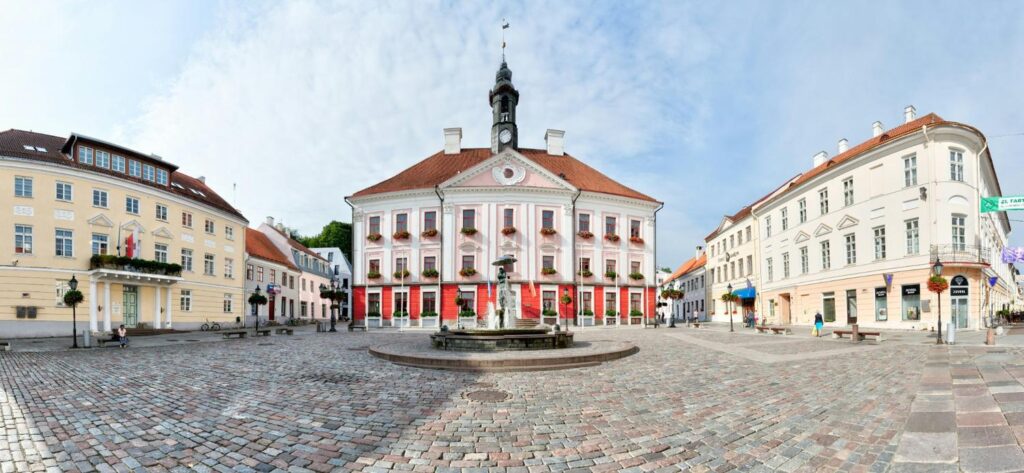
Photo by Jacques Bopp on Unsplash
Nestled along the banks of the Emajõgi River, Tartu is Estonia’s second-largest city and a vibrant hub of history, education, and culture. Known as the country’s “university town,” Tartu boasts a lively student population, rich traditions, and a charming old town that beautifully blends medieval architecture with modern creativity.
Whether you’re a history lover, art enthusiast, or simply looking for a cozy European city with a youthful vibe, Tartu offers an inviting atmosphere filled with fascinating museums, picturesque streets, and dynamic cultural events.
🌟 Highlights of Tartu
🎓 University of Tartu
Founded in 1632, the University of Tartu is the city’s beating heart and one of Northern Europe’s oldest universities. Its impressive neoclassical main building anchors the city’s intellectual life and welcomes visitors eager to explore its historic campus.
🏰 Tartu Old Town
Wander through cobblestone streets lined with colorful merchant houses, quaint cafes, and vibrant shops. Don’t miss the majestic Tartu Town Hall and the iconic Kissing Students Fountain in Town Hall Square, a beloved symbol of youthful romance and joy.
🖼️ Museums and Galleries
Tartu offers a variety of museums like the Estonian National Museum, showcasing the country’s cultural heritage, and the Tartu Art Museum, home to contemporary and classic Estonian artworks. The AHHAA Science Centre is a hit with families and curious minds alike.
🌳 Parks and Outdoor Spaces
Enjoy relaxing strolls along the Emajõgi River or unwind in Toome Hill Park, where you can admire ruins of the medieval cathedral and panoramic views of the city.
🎭 Cultural Scene
Tartu’s theaters, music festivals, and lively cafés create a dynamic cultural landscape, making it a hotspot for arts and entertainment in Estonia.
🚗 Getting There & Around
- Tartu is accessible by train, bus, and car from Tallinn and other major Estonian cities.
- The compact city center is easy to explore on foot or by bike, with plenty of rental options.
- Local buses connect neighborhoods and nearby attractions efficiently.
🕒 Best Time to Visit
- Late spring to early autumn offers pleasant weather and numerous outdoor festivals.
- Winter brings a cozy charm with holiday markets and snow-covered streets, perfect for festive exploration.
💡 Travel Tips
- Try traditional Estonian cuisine in local restaurants—don’t miss dishes like black bread, elk stew, and kama dessert.
- Check the university calendar for open lectures or events that may enrich your visit.
- Visit during the Tartu Hanseatic Days festival for a lively mix of medieval-themed events, markets, and performances.
- Bring comfortable shoes for exploring the charming old town and parks.
Tartu perfectly balances its rich historical roots with a youthful, creative spirit. Whether you’re delving into Estonia’s past at its museums, soaking up student life in cozy cafés, or simply enjoying a riverside walk, Tartu promises a warm welcome and unforgettable experiences for every traveler.
Saaremaa Island
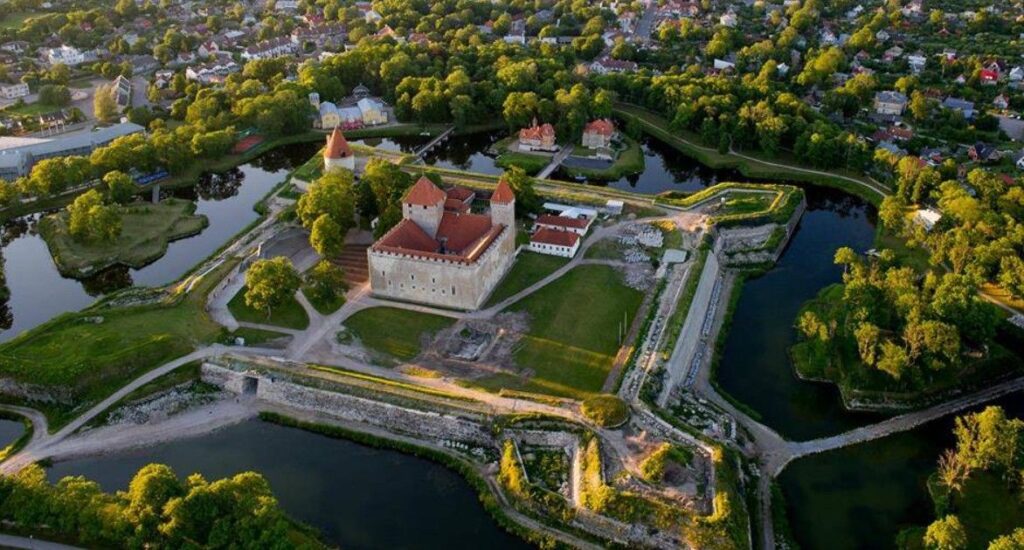
visitors a refreshing blend of rugged coastlines, charming villages, and intriguing landmarks. Whether you’re exploring ancient castles, wandering through serene forests, or tasting local delicacies, Saaremaa invites you to slow down and soak up its tranquil island spirit.
🌟 Highlights of Saaremaa Island
🏰 Kuressaare Castle
Dominating the island’s capital, Kuressaare, this well-preserved medieval fortress is a must-visit. With its impressive walls, towers, and museum exhibitions, the castle offers a fascinating glimpse into Saaremaa’s past and panoramic views of the surrounding town.
🌊 Stunning Nature & Coastlines
Saaremaa is dotted with beautiful beaches, rugged cliffs, and tranquil bays. The island’s diverse landscapes are perfect for hiking, birdwatching, and cycling. Don’t miss the unique meteorite craters and the picturesque Kaali Lakes.
🌲 Peaceful Villages & Traditional Culture
Explore quaint villages where time seems to stand still. Experience Saaremaa’s local traditions, handicrafts, and hearty island cuisine that reflect a deep connection to nature and history.
🌼 Seasonal Festivals & Events
From the vibrant medieval fairs to folk music festivals and nature celebrations, Saaremaa’s calendar is filled with cultural events that showcase the island’s heritage and community spirit.
🌿 Wellness & Relaxation
Saaremaa’s peaceful environment makes it an ideal spot for wellness retreats and spa visits, offering natural therapies and relaxation close to nature.
📍 How to Get There
- Saaremaa is accessible by ferry from mainland Estonia, with regular routes from Virtsu to Kuivastu or from Muhu Island.
- After arriving, you can explore the island by car, bike, or local buses.
🕒 Visitor Information
- Best Time to Visit: Late spring to early autumn (May to September) when the weather is mild and nature is in full bloom.
- Recommended Visit Duration: At least 2 to 3 days to enjoy the island’s natural beauty, historic sites, and cultural experiences.
- Admission Fees: Kuressaare Castle and some museums charge modest entrance fees; most nature areas are free to explore.
💡 Travel Tips
- 🚴 Rent a bike for easy, scenic island exploration.
- 🧳 Pack comfortable shoes for walking on varied terrain.
- 📸 Bring a camera—Saaremaa’s landscapes and historic architecture are incredibly photogenic.
- 🍽️ Try local specialties like smoked fish, rye bread, and juniper-flavored dishes.
- 🌦️ Be prepared for changing weather, especially if hiking or cycling outdoors.
Saaremaa Island is a serene retreat that combines rich history, vibrant culture, and stunning natural beauty. Whether you’re wandering through medieval castles, cycling along quiet coastal roads, or enjoying traditional Estonian hospitality, Saaremaa offers a deeply authentic and refreshing island experience that stays with you long after you leave.
Narva Castle
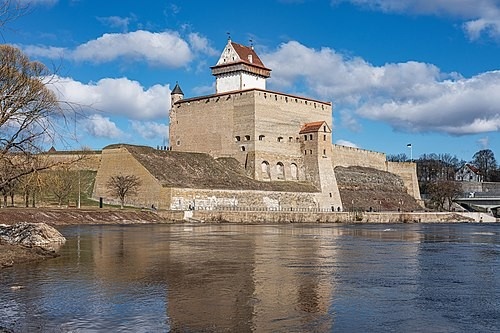
Perched majestically on the banks of the Narva River, right on the border between Estonia and Russia, Narva Castle (also known as Hermann Castle) stands as a powerful symbol of the city’s rich history and strategic importance. Dating back to the 13th century, this medieval fortress offers visitors a fascinating glimpse into the turbulent past of the region and the cultures that have shaped it.
Whether you’re a history buff, architecture enthusiast, or traveler eager to explore one of Estonia’s most impressive landmarks, Narva Castle promises a captivating journey through time.
🌟 Highlights of Narva Castle
🏯 Medieval Architecture & Defensive Walls
Explore the robust stone walls, towers, and courtyards of the castle, which have stood strong through centuries of battles and changing rulers. The Hermann Tower, the castle’s most iconic feature, offers panoramic views of the Narva River and the neighboring Russian city of Ivangorod.
🏺 Narva Museum Exhibits
Inside the castle, the Narva Museum showcases a diverse collection of artifacts that tell the story of the city’s past, from ancient times through the Hanseatic League period to modern history. Exhibits include medieval weapons, historical costumes, and archaeological finds.
🌉 Border Views & Cultural Contrast
The castle’s location right on the border provides a unique vantage point to observe the contrasting architecture and cultures of Narva and Ivangorod, separated only by the river.
🎟️ Interactive Tours & Events
Join guided tours that bring the castle’s history to life with engaging stories and reenactments. Throughout the year, the castle hosts medieval festivals, concerts, and cultural events that celebrate its rich heritage.
🚗 Getting There & Around
- Narva Castle is easily accessible by car or bus from Tallinn and other parts of Estonia.
- The castle is within walking distance of Narva’s city center, making it convenient to explore nearby cafes and shops after your visit.
- Guided tours and information are available in multiple languages.
🕒 Best Time to Visit
- Spring through early autumn is ideal for exploring both the castle and the scenic riverside surroundings.
- Summer offers vibrant events and festivals within the castle grounds.
- Winter visits provide a serene, snow-covered atmosphere, though some outdoor areas may be limited.
💡 Travel Tips
- Wear comfortable shoes for walking on uneven stone surfaces and climbing towers.
- Bring a camera—views from Hermann Tower and along the river are spectacular.
- Check the event calendar in advance to catch medieval reenactments or cultural festivals.
- Combine your visit with a stroll along the Narva promenade or a visit to nearby Ivangorod Fortress across the river.
Narva Castle is a must-see for anyone interested in Estonia’s rich history and borderland culture. With its impressive medieval architecture, fascinating museum exhibits, and stunning river views, the castle offers an unforgettable glimpse into a region where East meets West.
Kadriorg Palace and Park
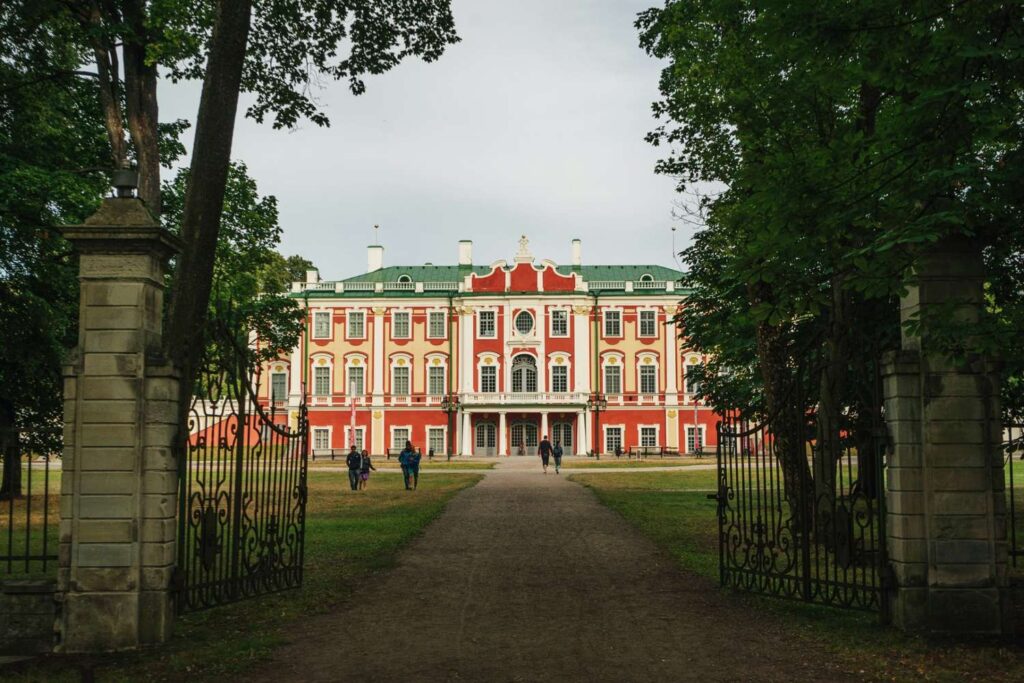
Photo by Nick Night on Unsplash
Nestled just east of Tallinn’s city center, Kadriorg Palace and Park is a stunning baroque masterpiece surrounded by beautifully landscaped gardens, serene ponds, and lush greenery. Built by Peter the Great for his wife Catherine I in the early 18th century, this lavish estate blends imperial Russian grandeur with Estonian charm. Today, it’s a cultural haven that invites visitors to relax, explore, and step back into a more opulent era.
🌟 Highlights of Kadriorg Palace and Park
🖼️ Kadriorg Art Museum
Housed inside the palace, the museum showcases a fine collection of European and Russian art from the 16th to the 20th century. The interiors themselves are just as impressive as the artwork—ornate ceilings, grand chandeliers, and sweeping staircases reflect the splendor of the tsarist era.
🌳 The Parklands
Covering over 70 hectares, Kadriorg Park is one of the most beautifully landscaped green spaces in Estonia. Wander along leafy paths, admire symmetrical flower beds, and discover sculptures, fountains, and quiet corners ideal for a picnic or peaceful reflection.
🏛️ Nearby Museums and Attractions
- Kumu Art Museum – Estonia’s largest and most modern art museum, located within Kadriorg Park.
- Mikkel Museum – Home to an eclectic private collection of fine art and porcelain.
- Peter the Great’s Cottage – A modest wooden house where the tsar stayed during the palace’s construction.
🌼 Japanese Garden
A more recent addition, this tranquil corner of the park blends natural elements and minimalist design to create a peaceful space for contemplation, featuring stone paths, gentle water features, and traditional landscaping.
📍 How to Get There
- By Tram: Tram lines 1 and 3 stop near the park (Kadriorg stop).
- By Bus: Several local buses also serve the area.
- By Foot or Bike: It’s a scenic 30-minute walk or a 10-minute bike ride from Tallinn Old Town.
🕒 Visitor Information
- Opening Hours:
- Kadriorg Palace: Typically open Tuesday–Sunday (closed Mondays).
- Park: Open daily and free to enter year-round.
- Best Time to Visit:
- Late spring to early autumn (May to September) when the gardens are in full bloom and the weather is ideal for walking.
💡 Travel Tips
- 📷 Don’t miss the view of the main garden from the palace balcony—a perfect photo spot!
- 🍦 Grab a coffee or ice cream from the cafés nearby and enjoy it in the park.
- 👟 Wear comfortable shoes—there’s plenty to explore, especially if you plan to visit neighboring museums.
- 🎨 Check for rotating exhibits and cultural events hosted in the palace and surrounding museums.
Kadriorg Palace and Park is more than just a beautiful estate—it’s a peaceful escape from city life, a walk through history, and a celebration of art and nature. Whether you’re marveling at fine art, strolling beneath the trees, or simply soaking in the beauty of a blooming garden, Kadriorg offers a memorable experience that highlights the elegance and culture of Tallinn.
Rakvere Castle
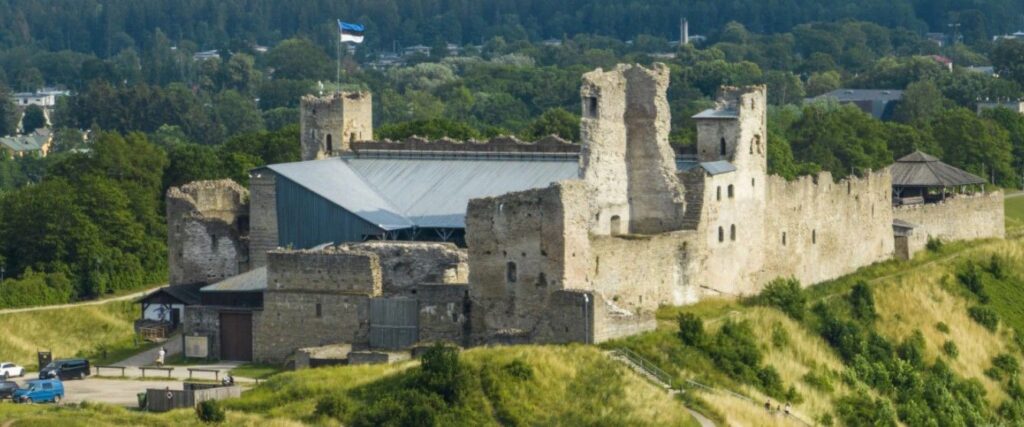
Tucked in the heart of northern Estonia, Rakvere Castle is one of the country’s most entertaining and interactive historical sites. Originally built in the 13th century by the Danish, this semi-ruined fortress has been beautifully reimagined as a lively medieval theme park—offering visitors a fun and educational experience that brings history vividly to life.
Whether you’re a family with kids, a history enthusiast, or just curious about Estonia’s medieval past, Rakvere Castle offers a hands-on journey that’s as immersive as it is memorable.
🌟 Highlights of Rakvere Castle
🏯 Medieval Architecture and Ruins
Explore the dramatic ruins of this once-mighty stronghold, including preserved towers, underground passages, and a grand courtyard. The castle’s layout gives a strong sense of what life was like for knights, monks, and townsfolk centuries ago.
⚔️ Live History Experiences
What sets Rakvere Castle apart is its interactive medieval experience. Don a suit of armor, try your hand at archery, witness blacksmith demonstrations, or visit the castle’s alchemist lab and torture chamber. Costumed guides and actors bring history to life in the most entertaining way.
🧙♂️ Themed Exhibitions
Step into the mysterious world of medieval science in the alchemist’s workshop, or learn about the castle’s military history in its underground chambers. Children and adults alike will enjoy the engaging exhibits and hands-on displays.
🎭 Events & Festivals
Rakvere Castle regularly hosts exciting medieval-themed events, including knight tournaments, open-air concerts, and historical festivals that draw visitors from all over Estonia and beyond.
🚗 Getting There & Around
- Rakvere is about a 1.5-hour drive from Tallinn, making it perfect for a day trip.
- Trains and buses also connect Tallinn with Rakvere, and the castle is a short walk from the town center.
- Parking is available nearby, and the town is easy to explore on foot.
🕒 Best Time to Visit
- Spring to early autumn is ideal for enjoying the full interactive experience, outdoor activities, and seasonal festivals.
- Winter visits are quieter and more atmospheric, especially when the castle is dusted in snow—though some outdoor features may be closed.
💡 Travel Tips
- Wear comfortable shoes—some paths are uneven due to the castle’s age.
- Plan for at least 2–3 hours to fully explore the site and enjoy the activities.
- Check the castle’s event calendar ahead of time to catch special performances or themed weekends.
- Families: Don’t miss the kid-friendly zones and medieval playground!
Rakvere Castle offers more than just a history lesson—it’s a full-sensory adventure into Estonia’s medieval world. Whether you’re climbing towers, watching knights clash swords, or tasting old-world dishes in the tavern, the castle makes learning fun and unforgettable. A visit here isn’t just sightseeing—it’s time travel.
Võru and Setomaa Region
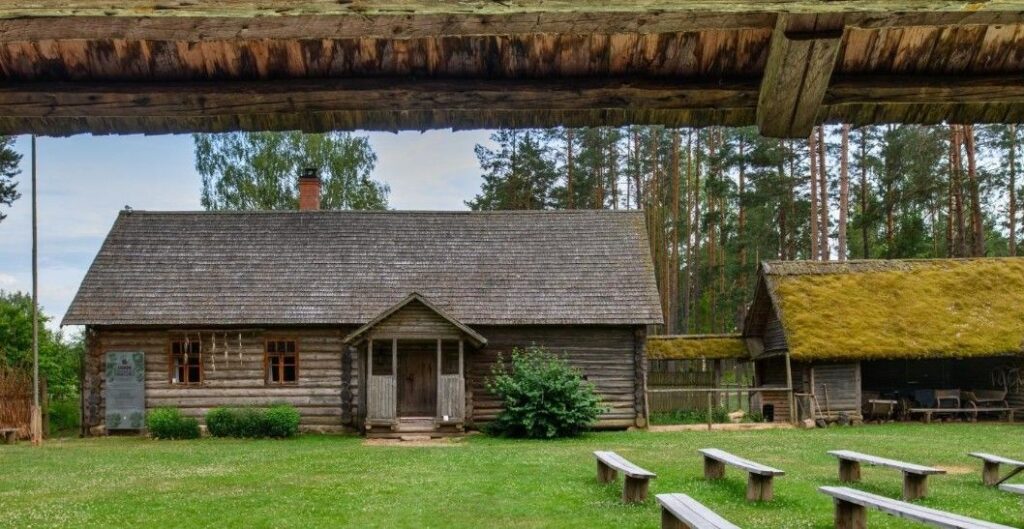
Tucked away in the southeastern corner of Estonia, the Võru and Setomaa Region is a captivating blend of natural beauty, ancient traditions, and deep-rooted cultural identity. Far from the bustle of Tallinn and Tartu, this peaceful region offers travelers a chance to connect with Estonia’s most authentic and soulful landscapes—rolling hills, pristine lakes, and a rich spiritual heritage that feels like a world apart.
Whether you’re drawn by hiking trails and lakefront serenity or the chance to meet the culturally distinct Seto people, this hidden gem is full of surprises and stories waiting to be discovered.
🌟 Highlights of Võru & Setomaa
🌊 Lake Tamula – Võru’s Waterside Jewel
Võru’s centerpiece is Lake Tamula, a serene body of water bordered by sandy shores and a promenade perfect for walks, swims, and sunset views. In summer, locals gather at the lakeside beach, while cafes and play areas make it a relaxing spot for families.
🏘️ Võru Old Town & Culture
Founded in 1784, Võru boasts a charming town center with low wooden houses, traditional Estonian architecture, and a calm, local vibe. Don’t miss the Võru Museum, which dives into the region’s history and folklore.
🎭 The Seto Culture – A Living Tradition
Setomaa is home to the Seto people, an ethnic minority with their own language, Orthodox Christian beliefs, and UNESCO-listed polyphonic singing tradition (leelo). The Seto Kingdom Day festival in summer is a one-of-a-kind celebration with music, costume, dance, and even the crowning of a “Seto King.”
⛪ Obinitsa – The Cultural Heart of Setomaa
Visit Obinitsa, a village known for its Seto culture house, Orthodox church, and Obinitsa Museum, which beautifully preserves Seto clothing, handicrafts, and religious artifacts. The surrounding hills and lakes add to its spiritual ambiance.
🚶♂️ Nature Trails & Hiking in Haanja
Just west of Võru lies Haanja Nature Park, home to Suur Munamägi, the highest peak in the Baltics (318 meters). Climb the tower for panoramic views of Estonia’s forested landscapes. The park also offers hiking, cycling trails, and bog walks perfect for nature lovers.
🌲 Piusa Caves
These mysterious sandstone caves, formed by hand during sand mining, are now home to Estonia’s largest bat colony. Guided tours are available to explore their unique formations and ecological importance.
📍 How to Get There
- By Car: The most convenient way to explore Võru and Setomaa. From Tartu, it’s about a 1.5–2 hour drive.
- By Bus: Regular buses connect Võru with Tallinn and Tartu, and smaller local buses reach Obinitsa and other villages.
- By Bike: Some travelers explore the area by bicycle to fully appreciate the slow, scenic charm of the region.
🕒 Visitor Information
- Best Time to Visit:
- Summer (June–August) for festivals, lake activities, and warm weather.
- Autumn (September–October) is quieter, with beautiful foliage and fewer crowds.
- Recommended Duration:
- 2–4 days to explore both Võru and Setomaa leisurely, including hiking, cultural experiences, and lakeside relaxation.
💡 Travel Tips
- 🎤 Catch a live leelo performance if possible—it’s deeply emotional and uniquely Seto.
- 🧵 Support local artisans by purchasing Seto handicrafts, like embroidered textiles or silver jewelry.
- 🍲 Try Seto cuisine, including sõir (a traditional cheese), kama, and Seto bread.
- 🧭 Use Obinitsa or Võru as your base—both have cozy guesthouses, local cafés, and access to nature.
The Võru and Setomaa Region is where Estonia slows down and speaks from the heart. With untouched nature, ancient cultural traditions, and warm hospitality, it offers an experience that feels timeless and deeply personal. Whether you’re hiking through the Haanja hills, listening to centuries-old songs, or simply enjoying a quiet lakeside moment, you’ll leave feeling refreshed—and connected to something truly special.
Hiiumaa Island
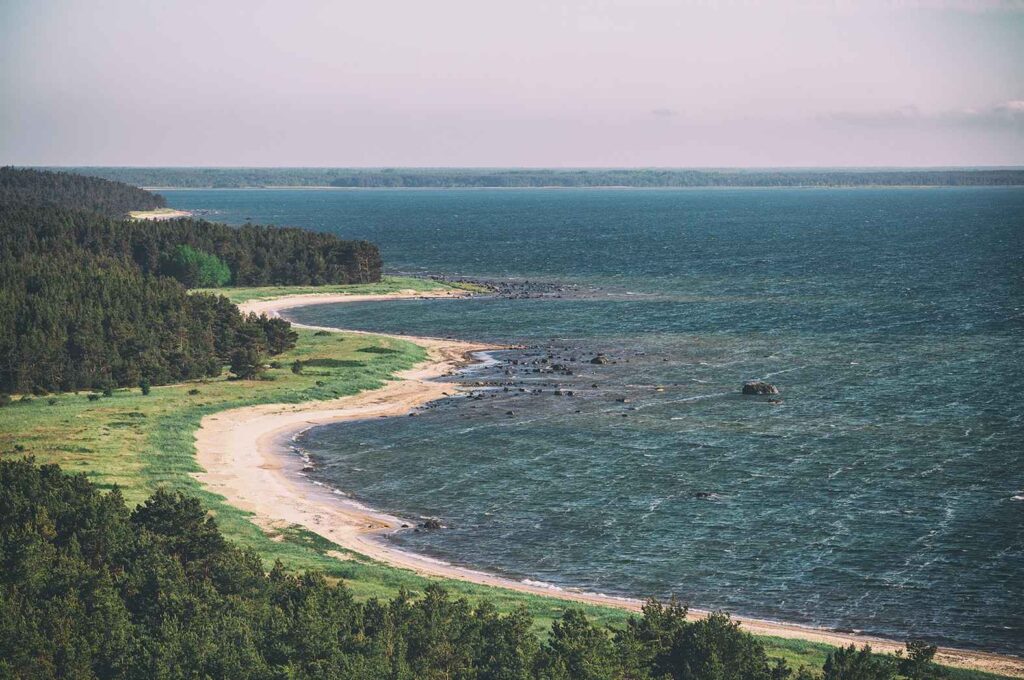
Tucked away in the Baltic Sea, Hiiumaa is Estonia’s second-largest island and a peaceful paradise of unspoiled nature, charming villages, historic lighthouses, and coastal beauty. Known for its laid-back atmosphere, pine forests, and windswept beaches, Hiiumaa is perfect for those seeking tranquility, outdoor adventures, or a break from busy tourist routes.
If you’re looking for a destination that combines raw natural beauty with authentic Estonian island culture, Hiiumaa is the place to be.
🌟 Highlights of Hiiumaa Island
🗼 Tahkuna Lighthouse
Standing proudly on the northern tip of the island, Tahkuna Lighthouse is the tallest lighthouse in Estonia. Climb to the top for sweeping views of the sea and shoreline. Its white cast-iron frame, imported from France in the 19th century, adds a touch of maritime elegance.
🌲 Kõpu Lighthouse
One of the oldest continuously operating lighthouses in the world, Kõpu Lighthouse dates back to the 16th century. It’s a must-visit for history lovers and offers a stunning vantage point of the surrounding forests and coastline.
🏖️ Kassari & Sääretirp
Kassari Peninsula is a peaceful area known for its meadows and sea breezes. The Sääretirp spit, a narrow path stretching into the sea, is one of Hiiumaa’s most iconic sights—especially magical at sunset or during a breezy walk.
🏛️ Hiiumaa Museum – Long House
Located in the village of Kassari, this cozy museum provides insight into the island’s history, culture, and seafaring roots. It’s a great place to understand how locals have lived in harmony with nature for centuries.
🌅 Beaches & Nature
Hiiumaa is dotted with peaceful, often empty beaches—ideal for swimming in summer or walking year-round. Forest trails, birdwatching areas, and coastal meadows make it a haven for nature lovers and photographers.
🚗 How to Get to Hiiumaa
- By Ferry: Regular ferries run between Rohuküla (mainland) and Heltermaa (Hiiumaa). The ride takes about 1.5 hours.
- By Plane: Seasonal flights from Tallinn to Kärdla (the island’s capital) take around 30 minutes.
- By Car or Bike: Once on the island, a car is handy, but Hiiumaa is also bike-friendly with scenic routes and low traffic.
🕒 Best Time to Visit
- Summer (June–August): Ideal for beach days, biking, and festivals.
- Spring & Autumn: Perfect for hiking, birdwatching, and enjoying the peace and foliage.
- Winter: Quiet and magical, especially if you’re looking to disconnect, though some attractions may be closed.
💡 Travel Tips
- 🥾 Bring outdoor gear: Whether it’s hiking shoes or a bike, you’ll want to explore Hiiumaa’s natural side.
- 🍽️ Taste local cuisine: Try smoked fish, sea buckthorn treats, and fresh baked goods in small cafés.
- 📷 Don’t miss golden hour at Tahkuna or Sääretirp—it’s a photographer’s dream.
- 🏕️ Consider staying overnight in a guesthouse or countryside farm stay for the full island experience.
Hiiumaa is a refreshing blend of untouched nature, warm local hospitality, and quiet beauty. Whether you’re exploring ancient lighthouses, walking barefoot along deserted beaches, or simply breathing in the pine-scented air, the island invites you to slow down and reconnect—with nature and yourself.
📝 Local Travel Tips
- 🎟️ Book tours and accommodations early during summer festivals and holiday seasons.
- 🌅 Experience the “White Nights” in June when the sun barely sets, offering extended daylight for sightseeing.
- 🚲 Rent a bike to explore national parks and countryside at your own pace.
- 🍽️ Try local dishes like black bread, smoked fish, and kama (a traditional Estonian grain mix).
- 🧥 Dress in layers: The weather can change quickly, especially near the coast and forests.
📌 Additional Information
- Safety: Estonia is generally very safe for tourists, with low crime rates.
- Connectivity: Estonia is one of the most digitally advanced countries with free Wi-Fi widely available.
- Shopping: Pick up handmade crafts, wool products, and local delicacies like honey and juniper vodka.
- Culture: Estonia is proud of its music and arts festivals, including the famous Song Festival held every five years.
✨ Final Thoughts
Estonia offers a wonderful mix of medieval history, breathtaking nature, and innovative spirit. Whether you’re wandering through Tallinn’s enchanting Old Town, relaxing on pristine beaches, or exploring peaceful islands, Estonia welcomes you with open arms and warm hospitality. Prepare to discover a country where tradition meets modernity in the most beautiful ways.
Let Estonia’s magic and charm inspire your next journey! 🌲🏰🌊
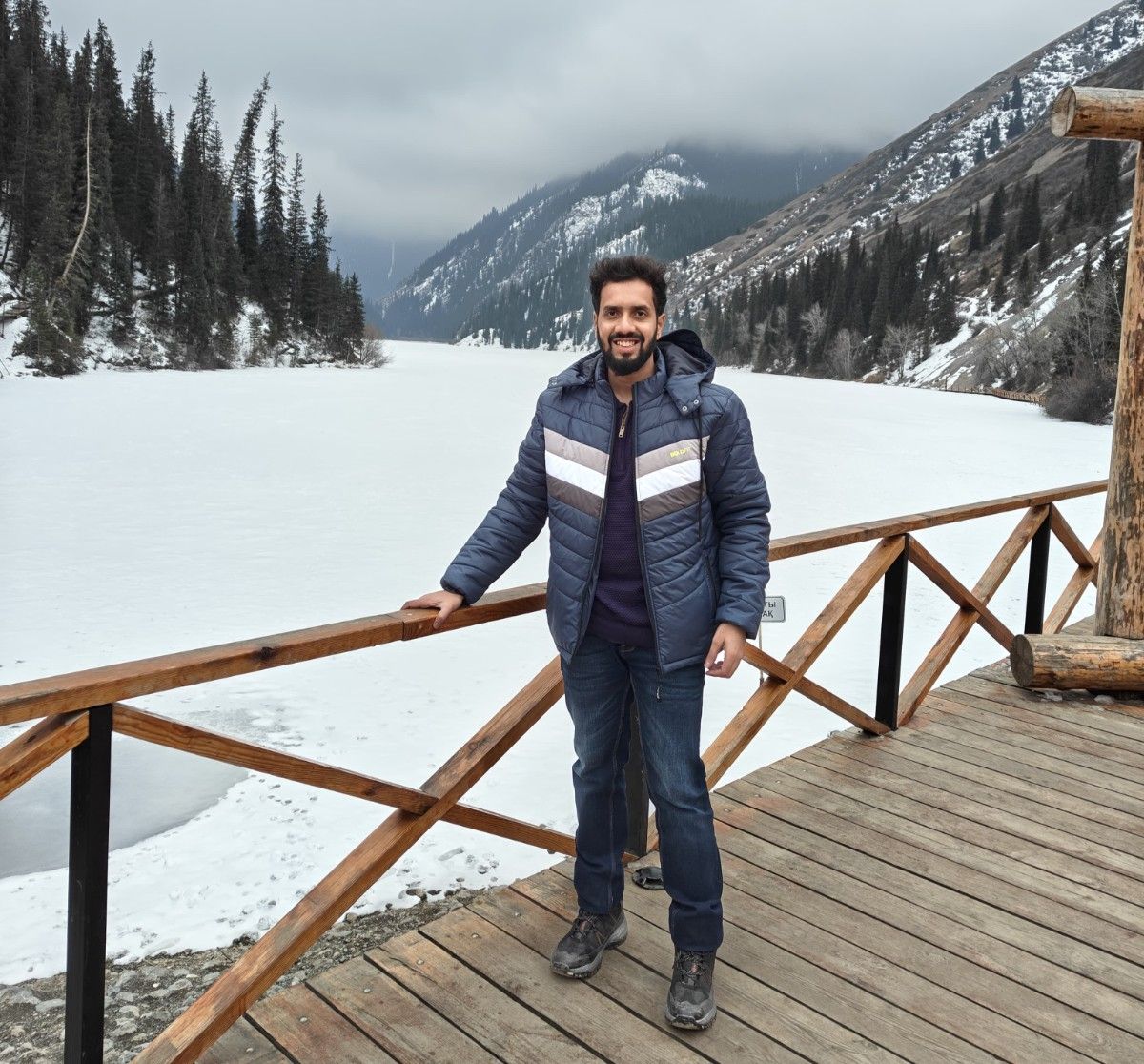
I’m Shreyash Mhashilkar — a full-stack developer by profession, and a passionate explorer of the future at heart.
With a strong foundation in both front-end and back-end , I spend my days building websites and applications that are not just functional, but scalable, intuitive, and user-focused.

